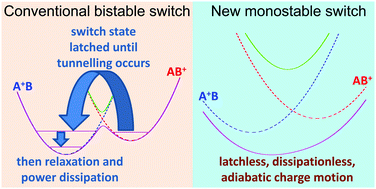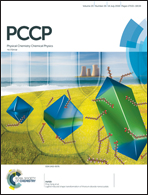Molecular quantum cellular automata cell design trade-offs: latching vs. power dissipation†
Abstract
The use of molecules to enact quantum cellular automata (QCA) cells has been proposed as a new way for performing electronic logic operations at sub-nm dimensions. A key question that arises concerns whether chemical or physical processes are to be exploited. The use of chemical reactions allows the state of a switch element to be latched in molecular form, making the output of a cell independent of its inputs, but costs energy to do the reaction. Alternatively, if purely electronic polarization is manipulated then no internal latching occurs, but no power is dissipated provided the fields from the inputs change slowly compared to the molecular response times. How these scenarios pan out is discussed by considering calculated properties of the 1,4-diallylbutane cation, a species often used as a paradigm for molecular electronic switching. Utilized are results from different calculation approaches that depict the ion either as a charge-localized mixed-valence compound functioning as a bistable switch, or else as an extremely polarizable molecule with a delocalized electronic structure. Practical schemes for using molecular cells in QCA and other devices emerge.



 Please wait while we load your content...
Please wait while we load your content...